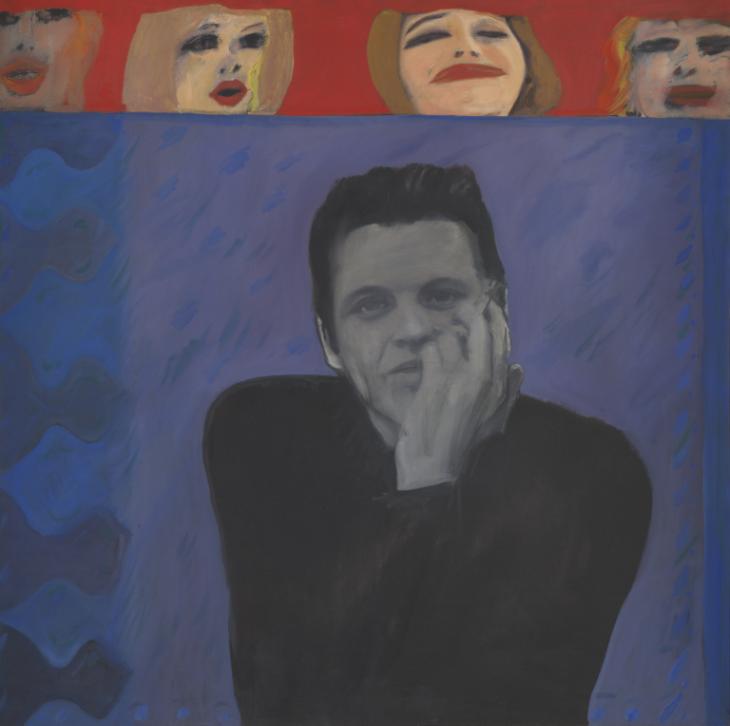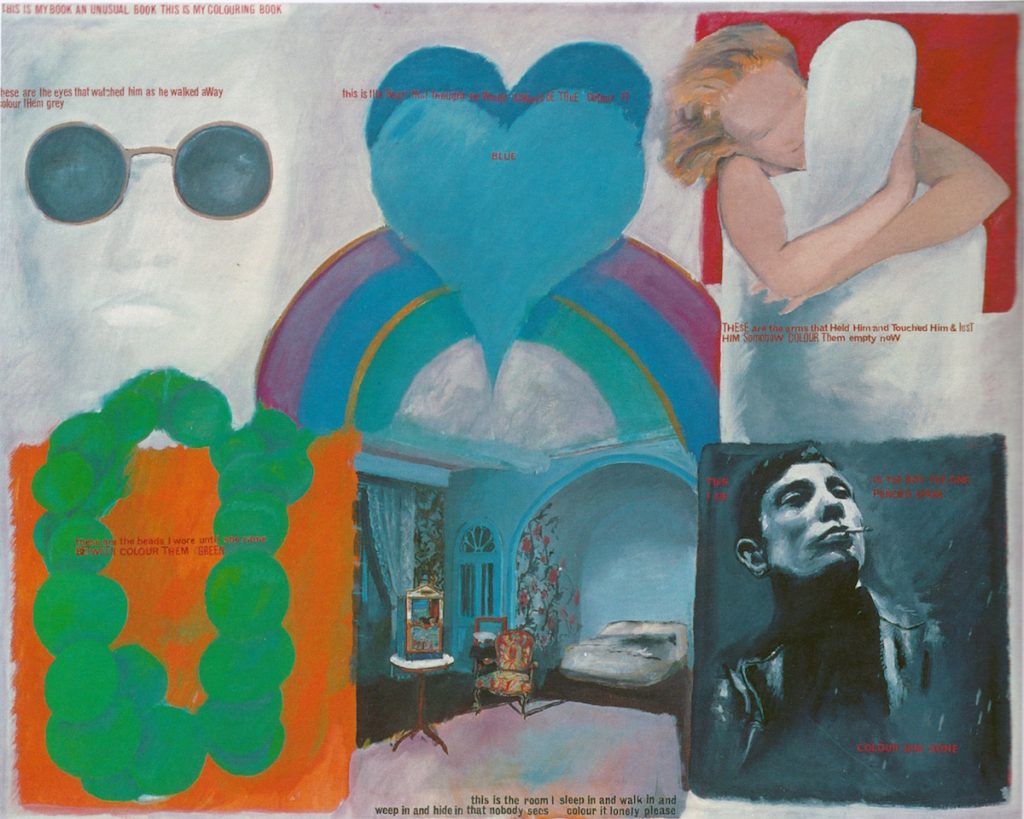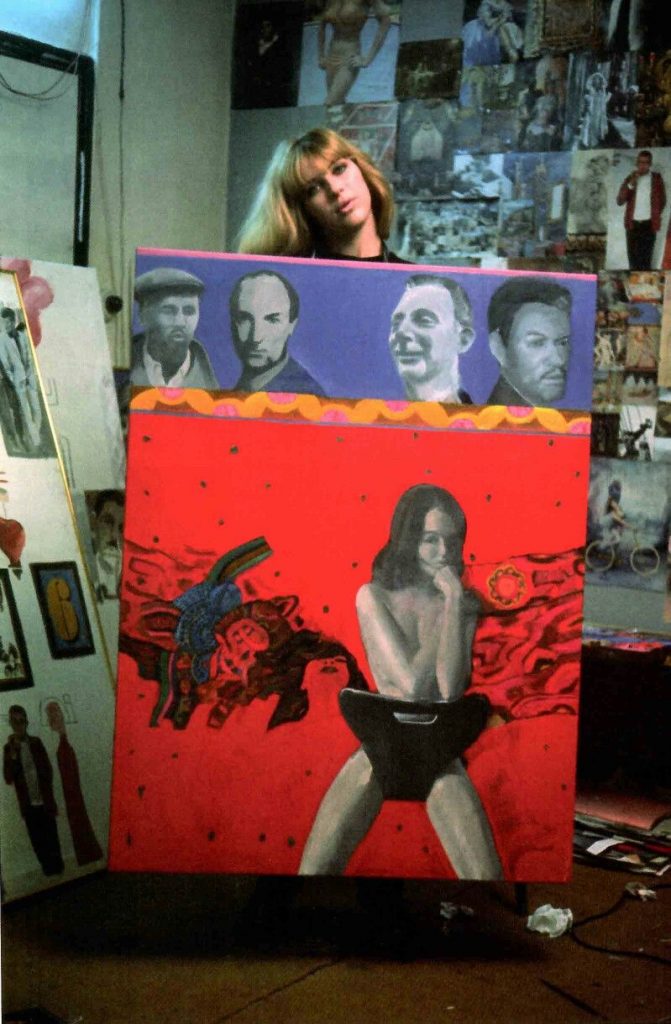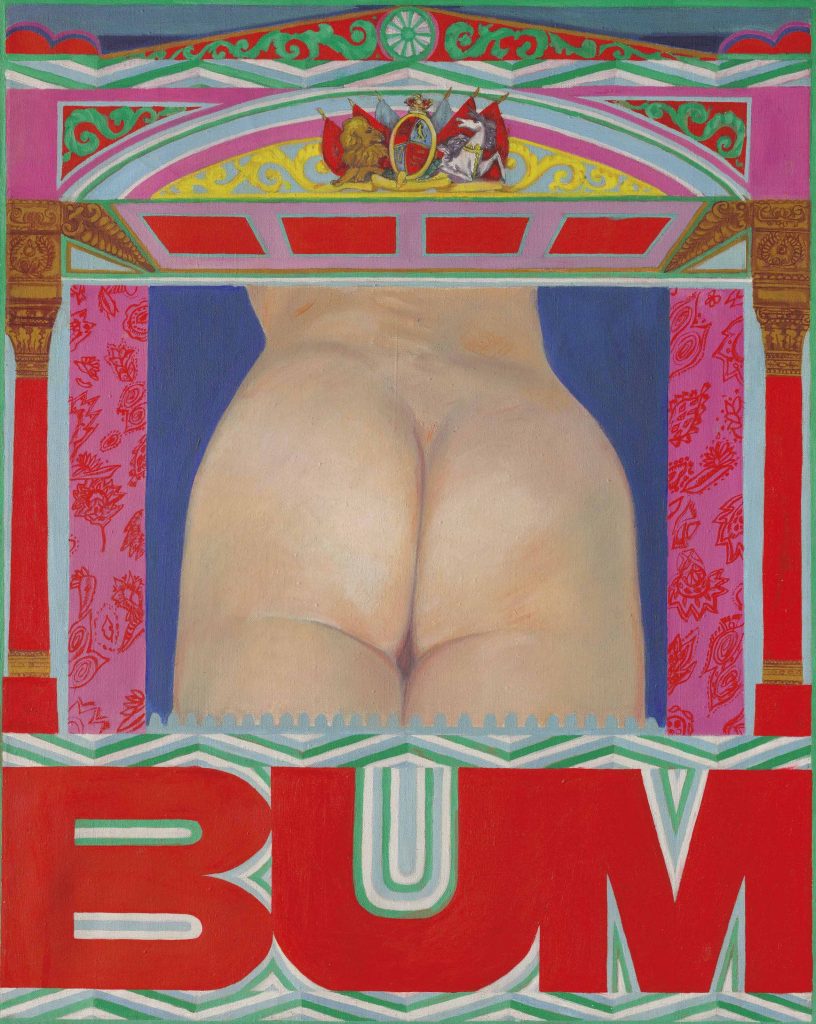The Pop Art movement emerged in the 1950s and thrived during the 1960s in America and Britain. The artists in this movement drew inspiration from commercial culture and incorporate commonplace items. Pauline Boty was a British artist and one of the few women involved in the Pop Art movement.

Her life as a female artist was anything but easy. She was accepted to Royal College of Art in 1958 but was told to stick to stained glass instead of painting and excluded from the main (male) group of future Pop Artists. With her strength of personality and talent she was able to persevere and establish herself as a Pop Artist.

The man in this painting, Derek Marlowe, was the same age as Boty and starting out in his career as an author and playwright. This piece stunningly brings together the two main concepts most popular in her work, heterosexual desire and pleasure and the gendering of the cultural scene of the 60s. The composition of this piece is very interesting and the large black figure set against a cool blue textured background creates a strong silhouette.

The painting “Only Blonde in the World” is one of Paulines most famous works. The vibrant color palette and abstract shapes is a signature style of Boty’s earlier work. This piece incorporates a full-length black-and-white portrait of the Hollywood actress Marilyn Monroe (a still from the movie “Some Like it Hot,” by way of Life magazine).

This piece uses familiar imagery from media in the 1960s, bright blocks of colour, and text to creatively visualize Barbra Streisand song “My Colouring Book”. The lyrics reflected the fact that Boty was actually engaged with, and referenced, the media that women were confronted with at the time.

This painting features a depiction of Christine Keeler, who was the young woman at the centre of the Profumo scandal. The bright red background and the men watching from above adds tension and disturbance in this piece.

This was Boty’s last piece that she completed while struggling with terminal cancer and sadly passing much too young. It’s amazing how she was able to make this vibrant humours piece during her struggle. This piece is a favourite of many as she once again makes a clear statement of female liberation.
Jeff Burgess
Hannah,
Great to get your final post in under the wire! Nice piece on this lesser known artist, Pauline Boty, whom I had little or no knowledge of. Very interesting and compelling work. Thanks for the introduction.
Have a great break!
Jeff